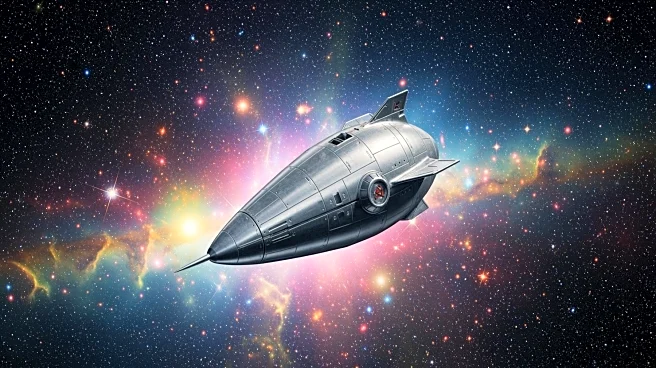What's Happening?
A recent study has proposed that the space object known as Arjuna 2025 PN7, initially thought to be a meteorite, might actually be a relic from a Soviet mission. Researchers Carlos and Raúl de la Fuente
Marcos from the Complutense University of Madrid have explored the possibility that this object could be Zond 1, a Soviet spacecraft intended for Venus that malfunctioned. The object was detected by the Pan-STARRS survey in 2014 but was too faint to be noticed until now. The hypothesis suggests that if not the spacecraft itself, 2025 PN7 could be a discarded rocket phase from the mission. The object is part of the Arjuna asteroid belt, consisting of asteroids in Earth-like orbits that are not gravitationally bound to Earth.
Why It's Important?
The identification of Arjuna 2025 PN7 as a potential Soviet relic could have significant implications for understanding space debris and its origins. If confirmed, it would highlight the long-lasting impact of space missions and the persistence of human-made objects in space. This discovery could also provide insights into the history of space exploration and the technological capabilities of past civilizations, particularly the Soviet Union during the space race era. The study raises questions about the identification and tracking of space objects, which is crucial for space safety and the prevention of collisions.
What's Next?
Further spectroscopic analysis is needed to confirm the composition of Arjuna 2025 PN7 and determine if it is indeed a piece of outdated technology. Researchers are calling for more detailed observations to ascertain its identity. If proven to be a Soviet relic, it could lead to increased interest in tracking and studying other potential technosignatures in space. The findings may prompt discussions among scientists and policymakers about the management of space debris and the preservation of historical artifacts in space.
Beyond the Headlines
The hypothesis that Arjuna 2025 PN7 could be a relic from a defunct civilization, such as the Soviet Union, opens up broader discussions about the legacy of human activity in space. It raises ethical questions about the responsibility of nations to manage space debris and the potential cultural significance of such objects. The study also touches on the challenges of distinguishing between natural and artificial objects in space, which is crucial for future space exploration and the search for extraterrestrial life.













